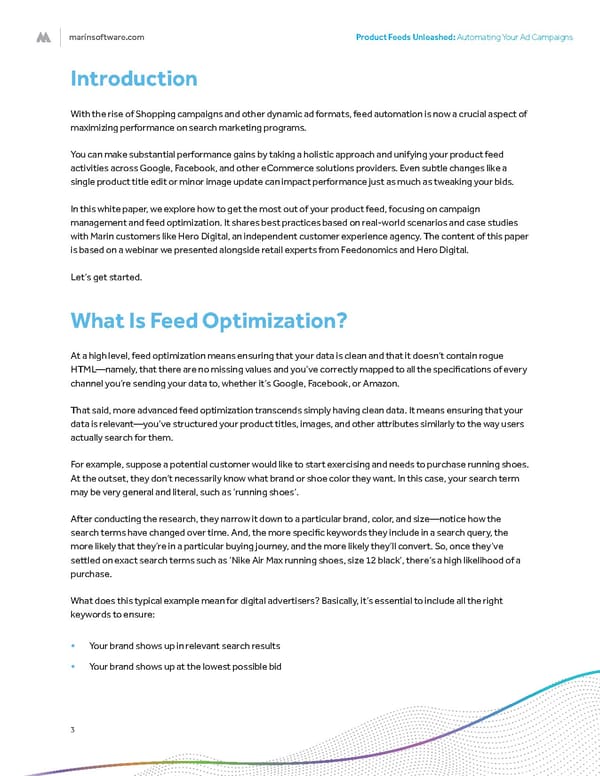marinsoftware.com Product Feeds Unleashed: Automating Your Ad Campaigns 3 Introduction With the rise of Shopping campaigns and other dynamic ad formats, feed automation is now a crucial aspect of maximizing performance on search marketing programs. You can make substantial performance gains by taking a holistic approach and unifying your product feed activities across Google, Facebook, and other eCommerce solutions providers. Even subtle changes like a single product title edit or minor image update can impact performance just as much as tweaking your bids. In this white paper, we explore how to get the most out of your product feed, focusing on campaign management and feed optimization. It shares best practices based on real-world scenarios and case studies with Marin customers like Hero Digital, an independent customer experience agency. The content of this paper is based on a webinar we presented alongside retail experts from Feedonomics and Hero Digital. Let’s get started. What Is Feed Optimization? At a high level, feed optimization means ensuring that your data is clean and that it doesn’t contain rogue HTML—namely, that there are no missing values and you’ve correctly mapped to all the specifications of every channel you’re sending your data to, whether it’s Google, Facebook, or Amazon. That said, more advanced feed optimization transcends simply having clean data. It means ensuring that your data is relevant—you’ve structured your product titles, images, and other attributes similarly to the way users actually search for them. For example, suppose a potential customer would like to start exercising and needs to purchase running shoes. At the outset, they don’t necessarily know what brand or shoe color they want. In this case, your search term may be very general and literal, such as ‘running shoes’. After conducting the research, they narrow it down to a particular brand, color, and size—notice how the search terms have changed over time. And, the more specific keywords they include in a search query, the more likely that they’re in a particular buying journey, and the more likely they’ll convert. So, once they’ve settled on exact search terms such as ‘Nike Air Max running shoes, size 12 black’, there’s a high likelihood of a purchase. What does this typical example mean for digital advertisers? Basically, it’s essential to include all the right keywords to ensure: • Your brand shows up in relevant search results • Your brand shows up at the lowest possible bid
 Feed Optimization Whitepaper Page 2 Page 4
Feed Optimization Whitepaper Page 2 Page 4